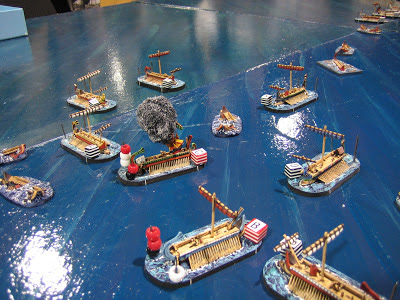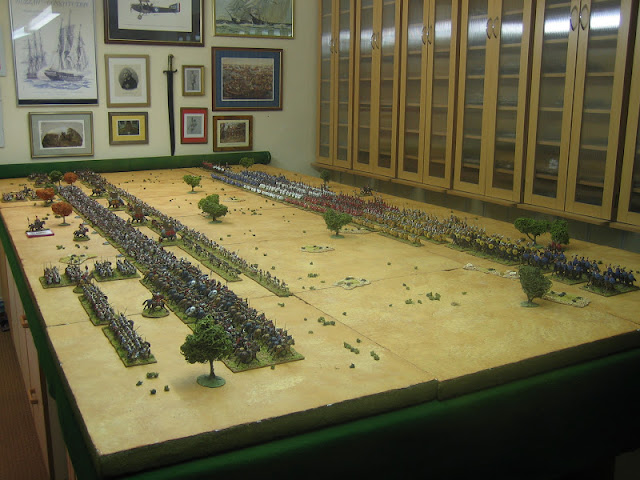The Carthaginian fleet is almost completely out of the harbour and deployed, menacingly, facing the Romans.
Carthaginians, on your marks, get set.......
"I can see the Carthaginians from 'ere!"
Rolling 'evens' on cruise cards the Romans manage to face the Carthaginians before impact, but their line is disjointed and confused.
The special scenario rule element of the scenario worked very well indeed. The Special 1 card was the last Roman card turned on turn 1.
Mixing the squadrons also proved to be a nice tool.
From the Carthaginian left, the clash in the centre. Carthage is winning. Pulcher's ship is already a casualty.
Rome claws its way back into the fight. Honours are about even. Both sides are close to achieving the relevant casualties for victory - though the Romans will still need to escape with five ships.
This was the window of opportunity for the Romans.

Disaster for the Romans. Their vessels are holed and sinking or, even worse, holed and on fire! Carthage cannot fail to win.
And the situation is the same across the battle area.
End game. Carthage is the Victor.
Peter has won two battles in a row now. He must be stopped!
As for the show, it was not a bad one. It was busy-ish in the morning but died after lunch. I'm not a fan of this venue, and I'm not sure I'll do another game there with shiny sea: the lighting reflected from the table enough to give you snow blindness. I apologise for the reflections in the photos; it was all I could do to not have vessels disappear into 'hot spots'.


























































